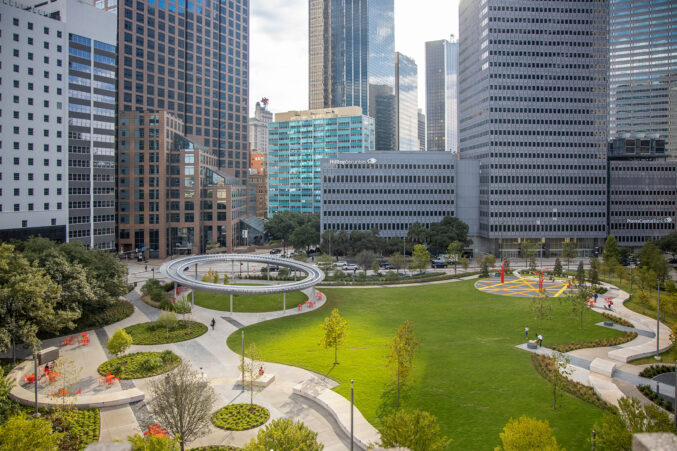Pretty fascinating little study by a couple of physicists (link).
Uncoordinated individuals in human society pursuing their personally optimal strategies do not always achieve the social optimum, the most beneficial state to the society as a whole. Instead, strategies form Nash equilibria which are often socially suboptimal. Society, therefore, has to pay a price of anarchy for the lack of coordination among its members.
I find the meta-issue to be more interesting and on-point than the proposed recommendations below. This study begins to put some empirical proof to the increased safety of populated pedestrian-friendly places or mass transit, the ‘Jacobsian’ “eyes on the street” theory that, in the end, we’re still for the most part looking out for each other – to simplify it.
To gain a better theoretical understanding of the nature of POA in networks, the team applied their methodology to various types of idealized networks. They came to the conclusion that, to improve the Price of Anarchy, you must close off various roads—something known as Braess’s paradox. In the network representing Boston, the researchers find six possible road closures that would reduce the delay in the suboptimal Nash (selfish) equilibrium. A similar analysis of the London and New York networks found that there were seven and twelve roads, respectively, that could be closed to improve the overall travel time.
While still theoretical, the work has the potential to aid future urban planning. Since the obvious solution of adding more roads may actually make the problem worse, an analysis of this sort could prove invaluable in determining real-world driving conditions.
This is where I start to get worried. The grid, the system with the most amount of choices and routes (or at least a modified grid i.e. D.C. vs. New York) is the most efficient and supports the most amount of ‘traffic’ or cars flowing at one time. What this study fails to account for is the differention in street hierarchy.
I can see the route closure suggestion having the most merit where there is already the most amount of mobility choices and, relatedly, density, i.e. London, yes; New York, yes; Boston, maybe; Dallas, gawd no.





